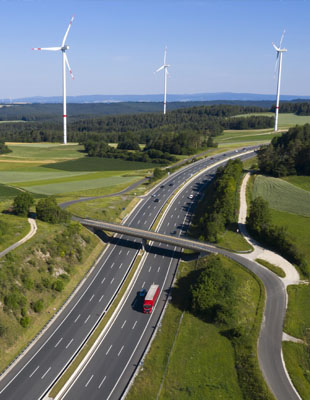Table of Contents
The challenge
Limited motorway access was causing congestion, delays, and safety issues. Upgrading the junction was essential to unlock growth, enable housing development and support employment.
26,700 tons
The M5 is an important corridor for regional and national transport in the UK, linking the South West with the Midlands and beyond. However, Junction 10 was previously what is known as a "limited movement junction", which meant that traffic can only enter and exit the motorway in certain direc-tions. This caused congestion and delays, limited connectivity and caused potential safety issues.
The M5 Junction 10 Improvement Scheme aimed to address these issues by improving the junction's layout and providing better access for vehicles travelling in all directions. More than just a road improvement project, the scheme will create opportunities for housing and employment and ensure that this critical section of the motorway continues to meet demand long into the future.
The solution
Improvements needed to be in keeping with the local environment and meet climate change requirements. Our sustainability-focused designs maximized carbon savings from the start.
30%
A key objective was to deliver a solution that is in keeping with the local environment, establishes bio-diversity net gain and meets climate change requirements.
As design consultant on behalf of Galliford Try, the Design and Build Contractor for the project, we focused on combining innovative design techniques with sustainability-focused strategies to create lasting environmental, social, and economic benefits.
This was achieved through a Whole Life Carbon approach embedded from the project's outset. Aligned with our commitment to sustainability and supporting our clients on their own sustainable transformation journeys, we started by using innovative design tools such as One Click LCA, as well as the National Highways’ Carbon Tool, and 3D BIM Modeling to forecast impactful and measurable results.
-
Read more
Leveraging digital design tools
Arcadis leveraged One Click LCA — an end-to-end sustainability platform for construction and manufacturing — to explore the advantages of implementing carbon assessments at the early design stage. Although not a client requirement, the platform was integrated into our project workflow as part of an internal pilot study to help build awareness within the team and demonstrate Arcadis’ capabilities in delivering carbon reductions across different project phases.
A key benefit of One Click LCA is its continuously updated Environmental Product Declarations (EPD) database, which allows for more accurate design assessments. Its intuitive interface and visual reporting features helped our design team to quickly identify high-emission materials and processes while exploring low-carbon alternatives. The platform's flexibility was particularly valuable, as it facilitated easy modification of parameters, such as transportation modes.
Using One Click LCA also helped us address key challenges in measuring and reducing whole-life car-bon emissions. Unlike other tools, it provided a more detailed approach to carbon assessment with granular results, making it easier to track carbon reduction progress and meet regulatory and client requirements. Its seamless integration with Autodesk Revit meant we could factor in sustainability considerations early in the process with accurate data transfer, reducing errors, and providing real-time feedback on environmental impacts. Additionally, the tools' scenario analysis function allowed the team to compare various design and material choices. This ensured we were able to make the most sustainable choices.
Through proactive engagement in sustainability workshops, early collaboration with experts, and continuous enhancements to the preliminary design, the project has been steered towards a more sustainable path.

The Impact
Our approach is expected to cut CO2e emissions by 30% compared to baseline, while lowering costs and enhancing regional biodiversity.
13%
Our approach is projected to reduce carbon emissions by 30% compared to the project baseline. To date, we have avoided approximately 26,700 metric tons of potential CO2e emissions (22% reduction) compared to a conventional design.
Furthermore, the inclusion of sustainability principles has ensured meaningful benefits for the client, the local community and the wider environment. The preliminary design phase alone has contributed a 13% improvement in biodiversity net gain compared to the pre-existing environment.
Not done reading?
This also might be interesting for you
- Related Insights
- Related Blogs






